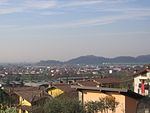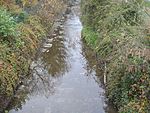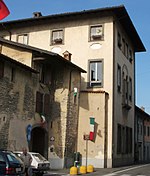Brusaporto
Cities and towns in LombardyMunicipalities of the Province of BergamoProvince of Bergamo geography stubs
Brusaporto (Bergamasque: Brüsa) is a comune (municipality) in the Province of Bergamo in the Italian region of Lombardy, located about 50 kilometres (31 mi) northeast of Milan and about 9 kilometres (6 mi) southeast of Bergamo. As of 31 December 2004, it had a population of 4,524 and an area of 5.0 square kilometres (1.9 sq mi).Brusaporto borders the following municipalities: Albano Sant'Alessandro, Bagnatica, Seriate.
Excerpt from the Wikipedia article Brusaporto (License: CC BY-SA 3.0, Authors).Brusaporto
Via Traversino,
Geographical coordinates (GPS) Address Nearby Places Show on map
Geographical coordinates (GPS)
| Latitude | Longitude |
|---|---|
| N 45.666666666667 ° | E 9.7666666666667 ° |
Address
Via Traversino
Via Traversino
24061
Lombardy, Italy
Open on Google Maps











